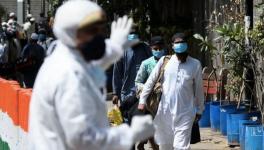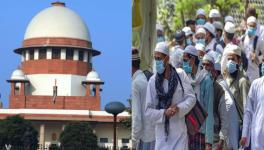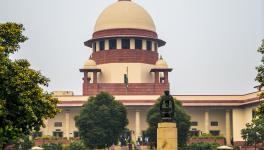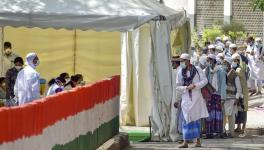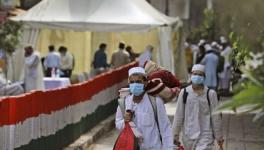India was Never Close to a 7-Day Doubling Growth Rate of COVID-19 Cases
Image Representational use only. image Courtesy: The Print
On April 5, officials of the Ministry of Health and Family Welfare (MoHFW) of the Government of India made a claim: “If we compare Tablighi Jamaat (TBJ) congregation and if that had not taken place, our doubling rate is 4.1 days and had those cases not happened the doubling rate would be 7.4 days right now.”
The statement has instantly been picked up by news platforms and social media, and in some instances, has been used to fix blame on the entire Muslim community in the country.
The doubling rate is a figure which describes the amount of time taken for a quantity to double. In the case of COVID-19, doubling rate is the number of days it takes for the number of confirmed cases (or number of deaths) to double. A doubling rate of 4 days implies that every four days the number of corona cases detected doubles (for example: 1 case on day 1, 2 cases on day 5, 4 cases on day 9).
However, there is some confusion about how health ministry officials came up with this figure in the first place. The officials have not made clear what assumptions or calculations were used to arrive at this figure. Some scientists have demanded that health ministry officials retract their statement as it is based on an erroneous assessment of doubling rates.
Erroneous Assumptions: At 7.4 doubling day growth, we would be at 708 cases
There is no available data on how many people attending the TBJ were tested each day or how many within those tested each day had confirmed incidences of COVID-19. What we do have are the following figures. On March 10, MoHFW reported a total of 62 confirmed cases and by April 5, the number was 4067. The MoHFW also makes the claim that there are 1445 confirmed cases linked to the TBJ incident. This is summarized in the following table. With the TBJ incident the doubling time is at 4.31 days while without the incident, the doubling time is 4.81 days.
But what would the number of confirmed cases look like if there was a doubling day growth of 4.1 days (or 7.4 days) as claimed by the MoHFW? The first figure plots cumulative cases based on these two doubling rates from March 10 till April 5. If we start at 62 cases on 10th March, then at a doubling day growth of 4.1 days, we would have reached 5028 cases on April 5, 2020. This is close to the actual cumulative number of 4067 cases reported by the MoHFW for the same day.
However, a 7.4 day doubling growth would imply that the country would have 708 cases till April 5.
Callous Statement Stoking Communal Tensions
It is therefore quite mysterious how the MoHFW officials arrived at the figure of 7.4 days without the TBJ incident. The presence of the Tablighi Jamat congregation with members who had been in contact with foreign countries where there was a COVID-19 outbreak, was dangerous (leaving aside questions of legality). What is wrong however, is the claim that the TBJ incident has decreased the rate of doubling by 3 days.
It is a problem given that on a global scale, India has very low rates of testing for the COVID-19 pandemic. Further, even within India, the testing rates differ across states (also a reason why Maharashtra and Kerala have more confirmed cases amongst other states). To single out the TBJ incident then amounts to laying the blame at this incident as the only ‘super spreader’ incident that took place.
It also amounts to singling out and blaming an entire community based on the actions of a few and to giving aid to many within the media and social media to further stoke communal tensions. It is why the statement made by the MoHFW is callous at best, and dangerous at worst. It must be retracted immediately.
The author is a senior lecturer at the School of Development, Azim Premji University in Bengaluru. The views are personal.
Get the latest reports & analysis with people's perspective on Protests, movements & deep analytical videos, discussions of the current affairs in your Telegram app. Subscribe to NewsClick's Telegram channel & get Real-Time updates on stories, as they get published on our website.









